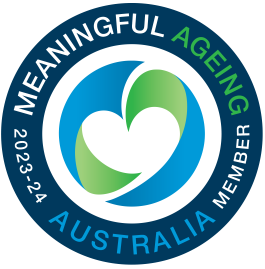At Vital Home Health Services, urinary incontinence is one of the most common issues among our aged care patients.
Here, we explore this extremely common condition in more detail and share tips for recognising, managing and overcoming urinary continence.
Urinary Incontinence: The Facts
Urinary incontinence affects millions of Australians every day for various reasons, although it becomes a more pertinent issue as we age. As such, aged care workers play a huge role in helping older adults to manage or cure their urinary incontinence so they feel comfortable and confident in their daily lives.
Urinary incontinence affects more women than men in younger years. The ageing process changes the statistics dramatically, with men as likely as women to suffer from incontinence when they reach old age.
According to the Continence Foundation of Australia, over a third of Australian men and women will suffer from incontinence when they are 65+. The good news is there are more treatments available nowadays to cure the condition permanently.
What Causes Incontinence in older people?
There is a shared belief that incontinence occurs naturally with age, which is not the case. Urinary incontinence is not just a given resulting from the body’s deterioration over time. Rather, it comes as a result of a body part functioning incorrectly or external intervention of some sort (for example, when taking medication).
Perhaps not surprisingly, the causes of incontinence differ between men and women; our bodies are designed and built to work differently, after all. Here are some of the common reasons for incontinence in both men and women as they age:
Causes of Male Urinary Incontinence
For some older men, urinary incontinence results from having a weakened pelvis. Others have a minor reaction to a medication, affecting how frequently they urinate.
However, for many older men, incontinence is due to an issue with their prostate. When left, prostate conditions can worsen and cause men more severe problems over time, requiring medication or surgery.
Causes of Female Urinary Incontinence
Pregnancy and menopause are known to weaken the bladder muscles, which can cause urinary incontinence. Women who do not treat the condition at the time will likely continue to experience issues with bladder control into their older years.
If you are an older adult suffering from unexpected urinary leaks or need to use the bathroom more often than before, discuss the issue with your GP or registered carer as soon as possible and get to the cause.
Symptoms of Urinary Incontinence
By understanding the type of urinary incontinence, you can identify its risk factors and how to treat it.
There are several types of urinary incontinence, categorized by their symptoms, as follows:
- Over-Active Bladder (OAB) – Urinary frequency and urgency, with or without urge incontinence.
- Stress incontinence – Leakage of small amounts of urine during physical movement (coughing, sneezing, laughing or exercising).
- Urge incontinence – Leakage of large amounts of urine at unexpected times, including during sleep.
- Overflow incontinence – Unexpected leaks of urine, small in volume, because of a full bladder.
- Functional incontinence – Untimely urination because of physical disability, external obstacles, or problems in thinking or communicating that prevent a person from reaching a toilet.
- Transient incontinence – Leakage due to a temporary situation (e.g. an infection, taking a new medication, or coughing caused by a cold).
Treatment of Urinary Incontinence
Nowadays, there are multiple treatments for urinary incontinence. With the right treatment, urinary incontinence can be managed, improved and often cured altogether.
As with most medical treatments, once a GP or registered nurse determines the cause, it becomes easier to find a resolution. Of course, the treatment choice depends on the type of bladder control problem, its seriousness, and the patient’s lifestyle.
The primary treatments for urinary incontinence are:
Bladder Control Training
- Pelvic floor exercises teach the muscles around the bladder area to work effectively. Leakage occurs when these muscles weaken, and by strengthening them again, the leakage stops. The exercise involves intermittently squeezing and holding the muscles for a number of seconds and is performed daily as advised by a GP.
- Bladder training involves monitoring when a patient needs to use the bathroom to urinate and any times they experience a leak in between, recording both on a chart to determine patterns. Once the pattern is known, patients can be encouraged to visit the bathroom before a leakage is likely.
Lifestyle Changes
- Reducing caffeine and alcohol intake can help to reduce incontinence – as can limiting liquids of any type.
- Diet can also cause incontinence – spicy foods, high-acid foods, and fizzy drinks in particular. Avoiding these foods or at least cutting back on them is suggested.
- Drinking cranberry juice is said to improve bladder function.
- Ask your GP to review your medications, which may impact bladder function.
Medical Procedures
- Medication is sometimes prescribed to patients with incontinence, to relax the muscles to allow for a full passing of urine or to tighten the muscles and prevent leakage.
- Surgery is recommended to patients if their bladder has moved position or there is a blockage due to an enlarged prostate.
At Vital Home Health Services, our registered nurses and care workers are experts at supporting patients in their homes with their daily needs – including urinary incontinence issues.
We see first-hand how this impacts our patients and cannot underestimate the stress urinary incontinence brings.
If you would like to discuss your home health nursing care needs, or have a question about urinary incontinence you would like to ask, contact one of our friendly team today.








